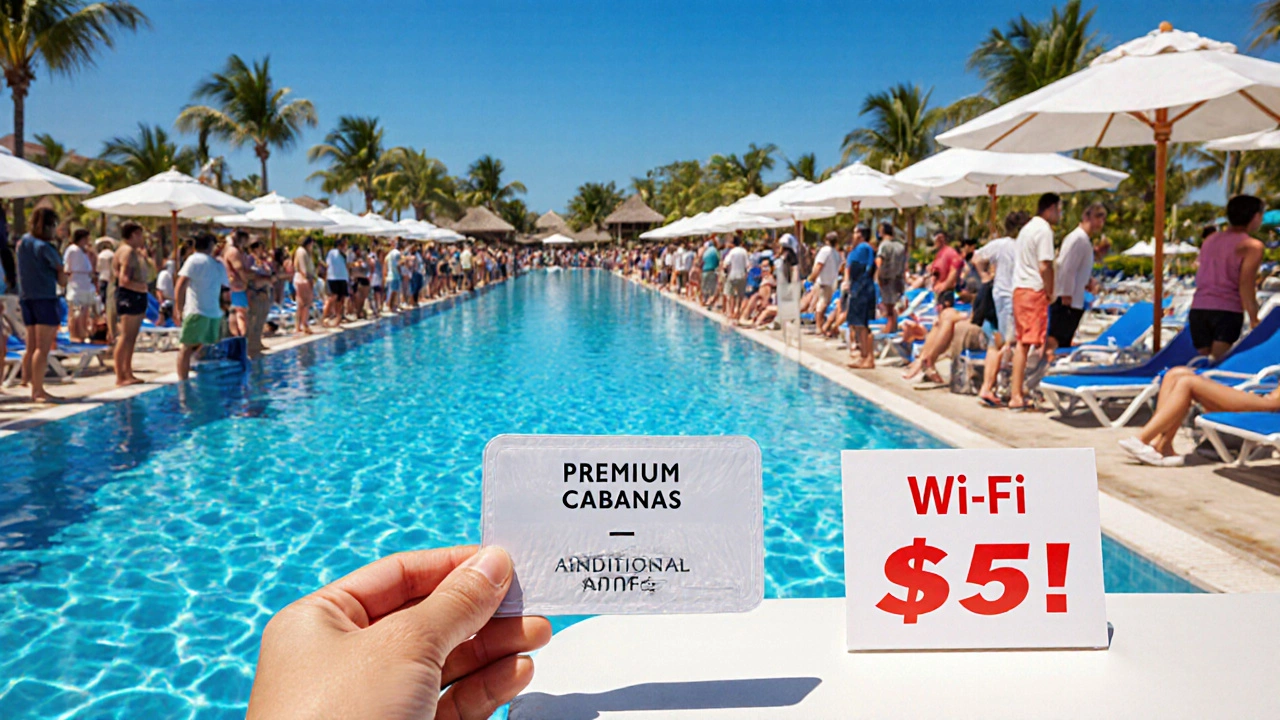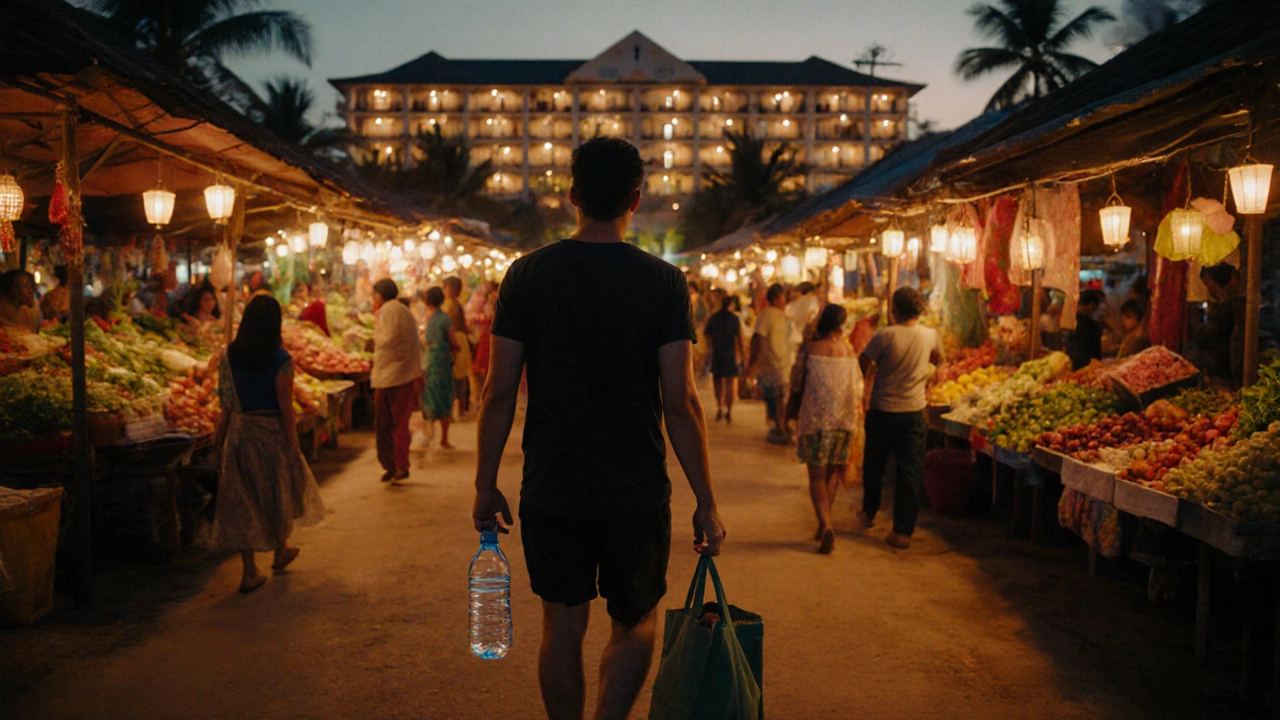Thinking about booking an all‑inclusive resort? It sounds like a dream: meals, drinks, activities, and a room all in one price. But before you hand over your credit card, you should know the hidden downsides that can turn a relaxing stay into a frustrating one.
All‑inclusive hotel is a type of resort that bundles accommodation, food & beverage, and most on‑site entertainment into a single daily rate. While the concept promises convenience and predictability, the reality often includes trade‑offs that affect your budget, experience, and even health.
Why the All‑Inclusive Model Can Feel Restrictive
When you pay a flat fee, the property aims to keep costs predictable. That goal can lead to practices that limit choice, sacrifice quality, or hide extra charges. Below are the most common disadvantages travelers run into.
1. Limited Food Variety and Quality
Most all‑inclusive resorts rely on buffet‑style service to serve large crowds quickly. This model has a few drawbacks:
- Repetitive menus: Breakfast may feature the same cereal and pastries every day, while dinner cycles through a handful of international dishes.
- Ingredient freshness: To keep costs low, some kitchens use pre‑prepared or frozen items, which can affect taste and texture.
- Chef creativity: With a fixed menu, chefs have little room to experiment, meaning you miss out on local specialties.
Travelers who love culinary exploration often find the meals underwhelming compared to independent restaurants.
2. Hidden Costs and Extra Fees
Even though the headline price looks all‑inclusive, many resorts add charges for premium services. These can include:
- Hidden fees such as beach cabanas, premium wine, or "special" diving excursions.
- Room upgrades (e.g., sea‑view versus garden view) that aren’t part of the standard package.
- Communication fees for Wi‑Fi beyond a basic limit.
These add‑ons can quickly erode the budget advantage that initially attracted you.
3. Lack of Authentic Local Experience
All‑inclusive resorts are often self‑contained islands, shielding guests from the surrounding community. The result?
- Local culture is rarely showcased beyond a few scheduled dance shows or craft stalls.
- Limited opportunities to try street food, visit local markets, or interact with residents.
- Missing out on spontaneous adventures that make travel memorable.
If cultural immersion is a priority, a resort‑only itinerary can feel bland.

4. Overcrowding and Generic Atmosphere
Resorts that market themselves as “all‑inclusive” often attract large groups, especially during peak season. This creates:
- Long lines at the pool, restaurants, and activity stations.
- Noise levels that make it hard to relax.
- A “one‑size‑fits‑all” design that lacks the charm of boutique or boutique‑style properties.
For travelers seeking peace and privacy, the bustling resort vibe can be a major letdown.
5. Rigid Schedules and Limited Flexibility
All‑inclusive packages often operate on a set timetable for meals, entertainment, and activities. While schedules help organize events, they can also feel restrictive:
- Buffet lunch opens at 12 pm and closes at 3 pm, limiting when you can eat.
- Daily shows repeat at set times, so you may miss a performance if you prefer a late‑night dip.
- Excursions are pre‑booked by the resort, leaving little room for spontaneous day trips.
If you like to set your own pace, these constraints can be frustrating.
6. Quality of Amenities May Decline Over Time
Because revenue is largely front‑loaded (you pay everything up front), some resorts cut back on upkeep after the high‑season. Common issues include:
- Worn‑out linens and towels that aren’t replaced frequently.
- Pool maintenance delays, leading to cloudy water.
- Gym equipment that shows signs of heavy use without regular servicing.
Regular guests often notice a dip in service quality after the first few weeks.
7. Challenges for Special Diets
Buffet formats make it harder for hotels to accommodate specific dietary needs. Even if you inform the staff:
- Gluten‑free, vegan, or allergy‑free options may be limited to a single station.
- Cross‑contamination risks increase when dishes share serving utensils.
- Special requests might incur a surcharge, turning a “free” benefit into a hidden cost.
Travelers with strict dietary restrictions often feel uneasy about relying solely on the resort’s offerings.

8. Environmental Impact
All‑inclusive resorts typically generate high levels of waste due to constant food service, single‑use plastics, and water‑intensive amenities. While some chains are adopting greener practices, many still:
- Produce excess food that ends up as landfill.
- Use non‑recyclable cutlery and cocktail stirrers.
- Consume large volumes of water for pools, landscaping, and laundry.
If sustainability matters to you, the all‑inclusive model can feel at odds with eco‑friendly travel values.
Quick Checklist: Is an All‑Inclusive Stay Right for You?
- Do you value convenience over culinary variety?
- Is your budget flexible enough to cover hidden fees?
- Do you want to immerse yourself in local culture?
- Will you be comfortable with a busy, schedule‑driven environment?
- Do you have special dietary needs that require careful planning?
- Is environmental impact a deciding factor for your travel choices?
If you answered “yes” to most of these, an all‑inclusive resort may still be a great fit. If not, consider a boutique hotel, vacation rental, or a traditional hotel‑plus‑meal plan.
Comparison Table: Key Disadvantages at a Glance
| Category | Typical Issue | Impact on Traveler |
|---|---|---|
| Food & Beverage | Repetitive buffet menus | Reduced culinary enjoyment |
| Cost | Hidden fees for premium services | Budget overruns |
| Culture | Limited interaction with locals | Missed authentic experiences |
| Atmosphere | Overcrowding & generic design | Less privacy, more noise |
| Flexibility | Fixed meal and activity times | Reduced spontaneity |
| Amenities | Declining upkeep after peak season | Lower quality services |
| Dietary Needs | Limited special‑diet options | Health risks, extra costs |
| Environment | High waste and water usage | Negative sustainability impact |
Mini FAQ
Are all‑inclusive resorts always more expensive?
Not necessarily. The upfront cost can be lower than paying for each meal and activity separately, but hidden fees and lower quality can make the total spend higher than a traditional hotel plus meals.
Can I bring my own food if I have strict dietary restrictions?
Most all‑inclusive hotels have policies against outside food for health and safety reasons. It’s best to discuss accommodations ahead of time and be prepared for possible extra charges.
How can I avoid hidden fees?
Read the fine print before booking. Look for lists of “included items” versus “extra charge” services, and ask the resort directly about costs for premium drinks, cabanas, and Wi‑Fi.
Is it worth choosing an all‑inclusive resort for families?
Families often appreciate the predictability of meals and kid‑friendly activities, but they should weigh the lack of local exposure and potential extra costs for premium options.
Do all‑inclusive hotels have sustainable practices?
A growing number of chains are adopting greener policies-like reduced single‑use plastics and food‑waste donation programs-but many still generate high waste. Look for certifications such as EarthCheck or Green Key.
Knowing these pitfalls helps you decide whether the convenience of an all‑inclusive hotels disadvantages package outweighs the potential drawbacks. Armed with this info, you can book a stay that truly matches your travel style.

